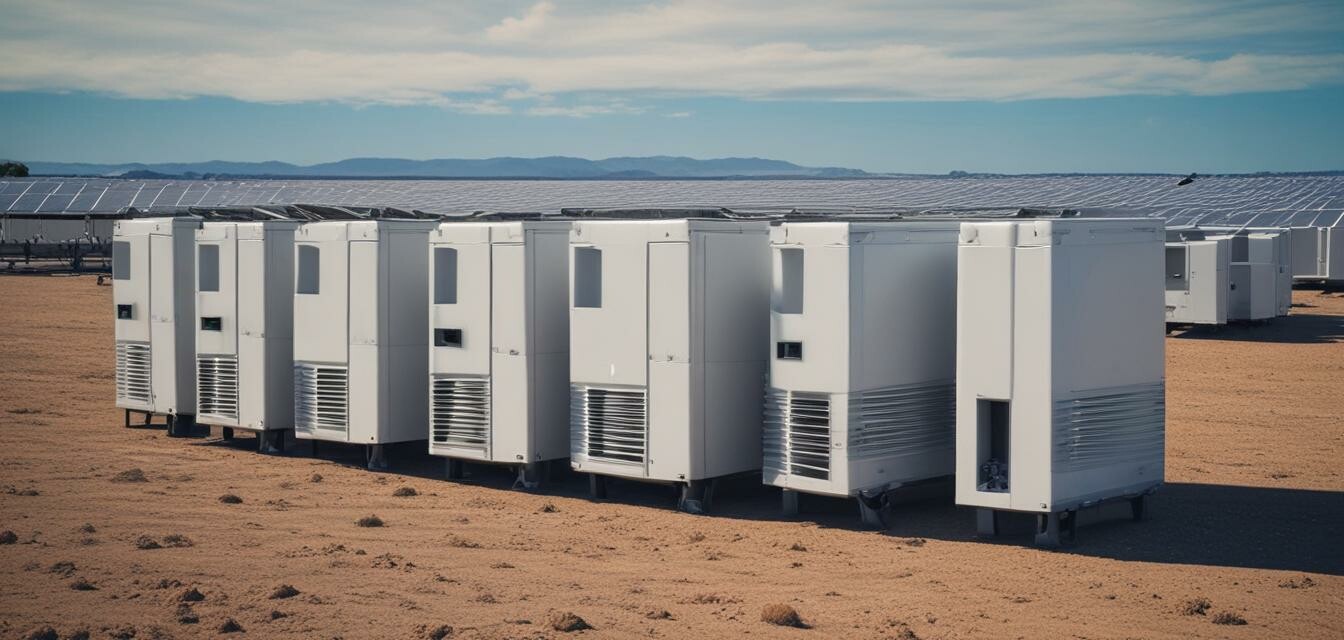
Best Practices for Sizing Battery Storage Solutions
Key Takeaways
- Understanding your energy needs is crucial for effective battery sizing.
- Consider the depth of discharge (DoD) of your batteries.
- Account for peaks in energy usage.
- Evaluate your solar panel output and its integration with battery storage.
- Regularly review and adjust your battery storage requirements as needs change.
Are you transitioning to a solar off-grid system and considering battery storage solutions? Sizing your battery storage system correctly is vital for ensuring that your home remains powered even when solar resources are scarce. This guide provides best practices to help you size your battery storage effectively, ensuring that you have enough energy to meet your needs while optimizing the value of your investment. Let's dive right in!
Understanding Your Energy Needs
The first step in sizing your battery storage is understanding your energy consumption. Analyzing your energy usage patterns will guide you in determining the required storage capacity. Follow these steps:
- Collect energy bills: Review your past electricity bills for a clearer idea of your monthly energy consumption.
- List major appliances: Identify the major appliances you use and their energy requirements. This can help you understand your overall daily power needs.
- Calculate peak usage: Determine peak usage times when multiple devices may draw power simultaneously.
- Monitor real-time consumption: Utilize smart plugs or energy monitors to gather real-time data on your energy usage.
Assessing Battery Capacity
The capacity of your battery storage system is generally measured in kilowatt-hours (kWh). The right capacity will depend on your energy needs and how long you want to power your appliances during shortages. Consider the following factors:
- Daily energy consumption: Calculate your average daily energy usage in kWh.
- Days of autonomy: Decide how many days of energy storage you want to have in case of prolonged cloudy weather.
- Efficiency losses: Account for efficiency drops during energy conversion and storage processes.
| Energy Consumption (kWh) | Required Battery Capacity (kWh) | Days of Autonomy |
|---|---|---|
| 10 | 20 | 2 |
| 20 | 40 | 2 |
| 30 | 60 | 2 |
Understanding Depth of Discharge (DoD)
Depth of discharge refers to how much energy you can safely use from a battery before needing to recharge it. Here are some important points:
- A higher DoD allows you to use more of your battery capacity, but it may reduce the battery's lifespan.
- Most manufacturers specify DoD ranges; common ranges are 50% to 80%.
Evaluating Solar Panel Output
Your solar panels play a crucial role in charging your battery storage. Here are some considerations:
- Assess the total wattage of your solar panel system.
- Calculate average daily sun hours in your area to determine the expected output.
- Ensure your battery system can handle the charge output from the panels effectively.
Managing Seasonal Variations
Seasonal changes can impact energy production and consumption significantly. Here are some tips:
- Monitor changes in energy usage during different seasons.
- Consider seasonal adjustments in your battery storage needs.
Review and Adjust Regularly
Your energy needs may change over time due to lifestyle changes, new appliances, or other factors. Regularly review your energy consumption and adjust your battery storage capacity accordingly.
Tips for Beginners
- Start with a smaller battery size, then increase it as you better understand your usage patterns.
- Consult with an energy specialist or installer for personalized recommendations.
Pros
- Improves energy independence.
- Reduces reliance on the grid during outages.
- Flexible systems can adapt to changing energy needs.
Cons
- Initial setup costs can be high.
- Requires regular maintenance and monitoring.
- Battery lifespan can limit long-term performance.
Conclusion
Correctly sizing your battery storage solution is an essential step for ensuring your off-grid solar system meets your energy needs. By understanding your energy consumption, assessing battery capacity, and regularly adjusting to your needs, you can maximize the benefits of your investment.
For more information on various components of your solar power system, check our Battery Storage page or explore our Buying Guides section. Don't forget to also look at Solar Panels and Charge Controllers for a complete solution!



